- Online car rental since 2005

Car Rental Mexico
Save time and money. We compare the offers of car rental companies in Mexico on your behalf.
- Free cancellation Up to 48 hours prior to the scheduled pick-up time
- Best price guarantee Have you found a better price? Let us know and we will make you a better offer.
- 24000+ pick-up locations Locations around the world

Car Rental Mexico
EasyTerra Car Rental Mexico is an independent car rental comparison site. Our site compares prices from well-known car rental companies so that, as a customer, you can always reserve your car with us at a competitive rate.
Car rental offers in Mexico
Whether you're looking for a small rental car or a station wagon for the entire family, we will always have a suitable vehicle at the lowest price. Below are some examples from our selection in Mexico.

-
Mex Rent a Car From€ 5 /day -
MÁS Rent a car From€ 7 /day
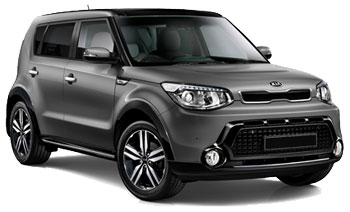
-
Mex Rent a Car From€ 8 /day -
MÁS Rent a car From€ 10 /day

-
Green Motion From€ 20 /day -
Localiza Car Rentals From€ 23 /day
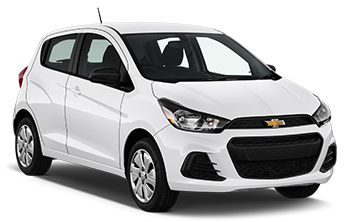
-
Alamo From€ 10 /day -
Enterprise From€ 23 /day

-
Green Motion From€ 12 /day -
Localiza Car Rentals From€ 17 /day -
Routes From€ 26 /day
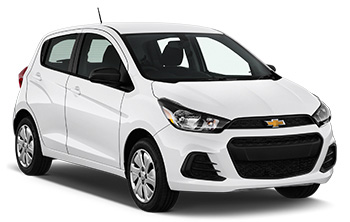
-
Alamo From€ 20 /day
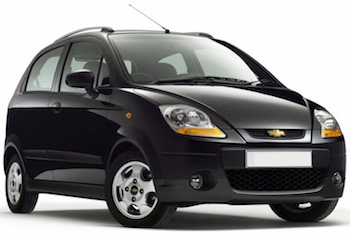
-
Alamo From€ 14 /day -
National Car Rental From€ 20 /day -
Enterprise From€ 22 /day

-
Alamo From€ 22 /day -
Enterprise From€ 29 /day -
National Car Rental From€ 40 /day

-
Sixt From€ 30 /day

-
Mex Rent a Car From€ 5 /day -
MÁS Rent a car From€ 7 /day -
ACE Rent A Car From€ 15 /day
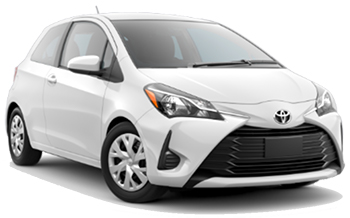
-
Mex Rent a Car From€ 5 /day -
MÁS Rent a car From€ 7 /day

-
Dollar Rent a Car From€ 15 /day -
Europcar From€ 19 /day -
Avis From€ 20 /day
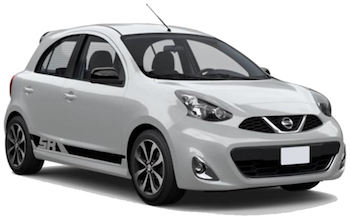
-
MÁS Rent a car From€ 8 /day -
Mex Rent a Car From€ 8 /day -
Budget From€ 10 /day
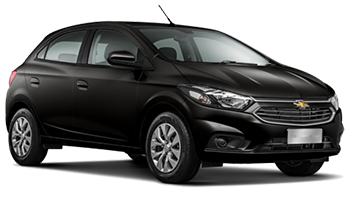
-
MÁS Rent a car From€ 8 /day

-
Payless Car Rental From€ 17 /day -
Alamo From€ 17 /day -
Green Motion From€ 20 /day

-
Dollar Rent a Car From€ 11 /day -
Hertz From€ 12 /day -
Europcar From€ 13 /day

-
Hertz From€ 12 /day

-
Alamo From€ 17 /day -
Green Motion From€ 20 /day -
Enterprise From€ 29 /day

-
Mex Rent a Car From€ 5 /day -
MÁS Rent a car From€ 7 /day -
Localiza Car Rentals From€ 18 /day
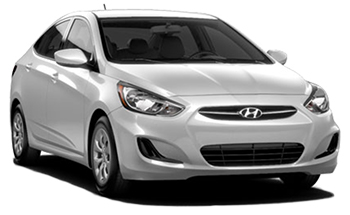
-
Mex Rent a Car From€ 5 /day -
MÁS Rent a car From€ 7 /day -
ACE Rent A Car From€ 15 /day
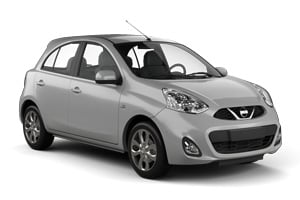
-
Dollar Rent a Car From€ 15 /day -
Alamo From€ 22 /day

-
MÁS Rent a car From€ 8 /day -
Mex Rent a Car From€ 8 /day -
Alamo From€ 16 /day
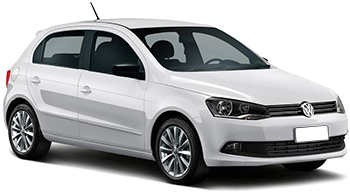
-
Payless Car Rental From€ 12 /day -
Alamo From€ 14 /day -
Europcar From€ 15 /day
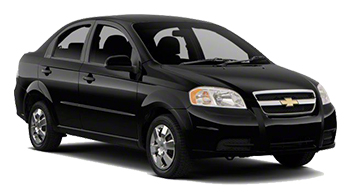
-
Dollar Rent a Car From€ 16 /day -
Alamo From€ 17 /day -
Europcar From€ 20 /day

-
Green Motion From€ 13 /day -
Dollar Rent a Car From€ 13 /day -
Keddy By Europcar From€ 13 /day

-
Payless Car Rental From€ 13 /day -
Budget From€ 13 /day -
Alamo From€ 15 /day
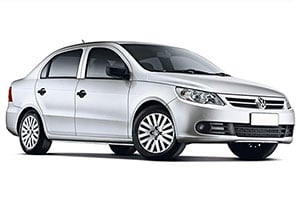
-
Payless Car Rental From€ 17 /day -
Alamo From€ 19 /day -
Europcar From€ 22 /day
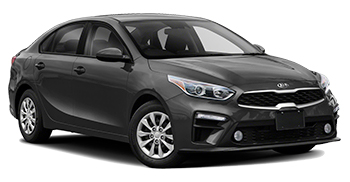
-
Mex Rent a Car From€ 6 /day -
MÁS Rent a car From€ 7 /day -
Enterprise From€ 28 /day
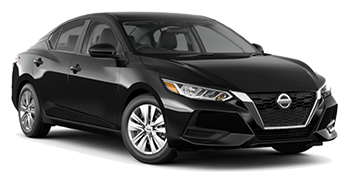
-
Mex Rent a Car From€ 6 /day -
MÁS Rent a car From€ 7 /day -
Green Motion From€ 17 /day

-
Thrifty From€ 15 /day -
Dollar Rent a Car From€ 19 /day -
Hertz From€ 21 /day
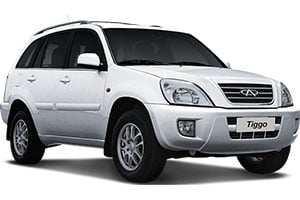
-
MÁS Rent a car From€ 8 /day -
Mex Rent a Car From€ 8 /day
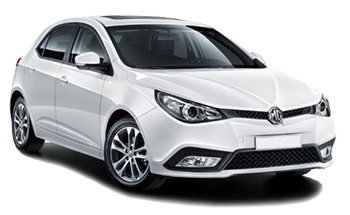
-
MÁS Rent a car From€ 8 /day -
Mex Rent a Car From€ 8 /day

-
Thrifty From€ 15 /day -
Dollar Rent a Car From€ 19 /day -
Hertz From€ 21 /day
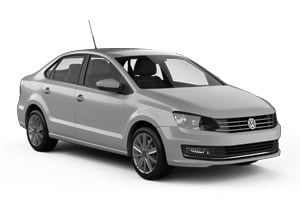
-
Payless Car Rental From€ 12 /day -
Green Motion From€ 15 /day -
Keddy By Europcar From€ 18 /day

-
Mex Rent a Car From€ 14 /day -
MÁS Rent a car From€ 14 /day

-
Payless Car Rental From€ 17 /day -
Dollar Rent a Car From€ 19 /day -
Europcar From€ 22 /day

-
MÁS Rent a car From€ 9 /day
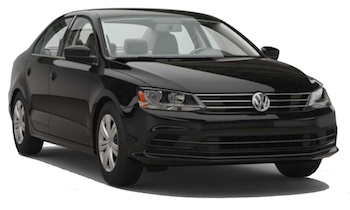
-
MÁS Rent a car From€ 10 /day -
Green Motion From€ 18 /day -
Dollar Rent a Car From€ 18 /day

-
Thrifty From€ 16 /day -
Dollar Rent a Car From€ 18 /day

-
MÁS Rent a car From€ 10 /day -
Mex Rent a Car From€ 13 /day -
Payless Car Rental From€ 23 /day

-
Payless Car Rental From€ 11 /day -
Enterprise From€ 23 /day -
Alamo From€ 24 /day
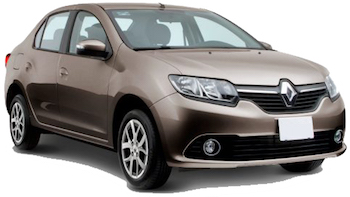
-
Thrifty From€ 17 /day -
Dollar Rent a Car From€ 18 /day -
Hertz From€ 26 /day

-
Mex Rent a Car From€ 13 /day -
Avis From€ 26 /day -
Green Motion From€ 26 /day

-
Thrifty From€ 16 /day -
Dollar Rent a Car From€ 18 /day -
Hertz From€ 26 /day

-
Payless Car Rental From€ 17 /day -
Alamo From€ 25 /day -
Budget From€ 26 /day
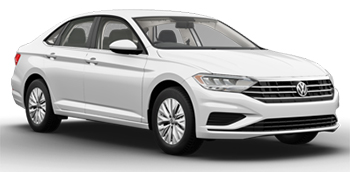
-
Payless Car Rental From€ 12 /day -
Alamo From€ 28 /day -
Budget From€ 31 /day

-
MÁS Rent a car From€ 15 /day -
Mex Rent a Car From€ 16 /day

-
Payless Car Rental From€ 18 /day -
Alamo From€ 28 /day -
Budget From€ 31 /day

-
Payless Car Rental From€ 21 /day -
Europcar From€ 28 /day -
Budget From€ 34 /day

-
Payless Car Rental From€ 24 /day -
Budget From€ 47 /day -
Europcar From€ 60 /day
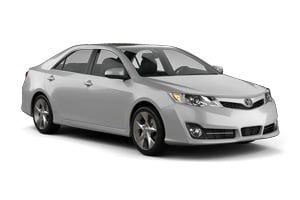
-
ACE Rent A Car From€ 22 /day -
Budget From€ 71 /day -
Avis From€ 88 /day

-
Localiza Car Rentals From€ 23 /day -
Dollar Rent a Car From€ 24 /day -
Thrifty From€ 25 /day

-
Dollar Rent a Car From€ 24 /day -
Thrifty From€ 25 /day -
Hertz From€ 25 /day

-
Dollar Rent a Car From€ 24 /day -
Hertz From€ 29 /day -
Thrifty From€ 30 /day
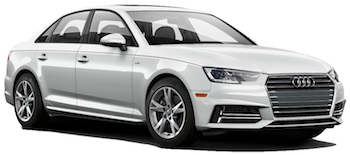
-
Payless Car Rental From€ 21 /day

-
Payless Car Rental From€ 22 /day

-
Dollar Rent a Car From€ 25 /day -
Hertz From€ 25 /day -
Thrifty From€ 25 /day

-
Dollar Rent a Car From€ 25 /day -
Hertz From€ 25 /day -
Thrifty From€ 25 /day

-
ACE Rent A Car From€ 26 /day

-
Avis From€ 30 /day

-
Avis From€ 32 /day -
Europcar From€ 49 /day

-
Avis From€ 30 /day -
Keddy By Europcar From€ 40 /day -
Europcar From€ 43 /day

-
Alamo From€ 34 /day

-
MÁS Rent a car From€ 15 /day -
Mex Rent a Car From€ 16 /day
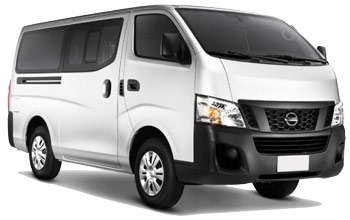
-
Payless Car Rental From€ 37 /day -
Enterprise From€ 78 /day -
National Car Rental From€ 93 /day

-
MÁS Rent a car From€ 72 /day -
Mex Rent a Car From€ 72 /day -
Keddy By Europcar From€ 100 /day

-
Enterprise From€ 83 /day -
National Car Rental From€ 100 /day -
Payless Car Rental From€ 130 /day

-
Avis From€ 164 /day

-
Avis From€ 88 /day -
Budget From€ 115 /day

-
Budget From€ 118 /day
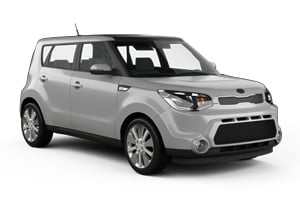
-
Mex Rent a Car From€ 8 /day -
MÁS Rent a car From€ 10 /day

-
MÁS Rent a car From€ 8 /day -
Mex Rent a Car From€ 8 /day -
Alamo From€ 16 /day

-
Dollar Rent a Car From€ 18 /day -
Thrifty From€ 21 /day -
Hertz From€ 26 /day

-
MÁS Rent a car From€ 8 /day -
Mex Rent a Car From€ 8 /day

-
MÁS Rent a car From€ 10 /day -
Mex Rent a Car From€ 13 /day -
Alamo From€ 22 /day
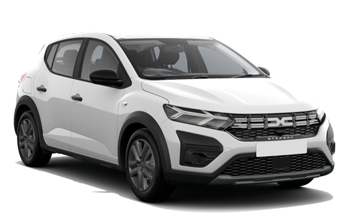
-
Dollar Rent a Car From€ 19 /day -
Hertz From€ 21 /day -
Thrifty From€ 21 /day

-
Mex Rent a Car From€ 14 /day -
MÁS Rent a car From€ 14 /day

-
Thrifty From€ 15 /day -
Dollar Rent a Car From€ 19 /day -
Hertz From€ 21 /day

-
Dollar Rent a Car From€ 24 /day -
Payless Car Rental From€ 27 /day -
Hertz From€ 29 /day
Popular cities in Mexico
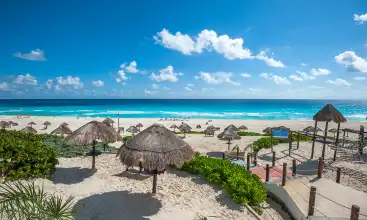
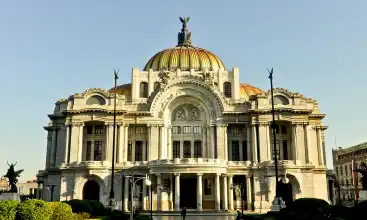
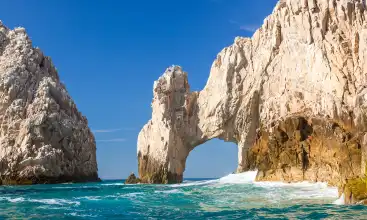


Popular rental locations in Mexico
-
Car Rental Cancun International AirportFrom
€ 7 /day -
Car Rental Mexico City International AirportFrom
€ 7 /day -
Car Rental San José del Cabo AirportFrom
€ 5 /day -
Car Rental La Paz AirportFrom
€ 5 /day -
Car Rental Merida International AirportFrom
€ 5 /day -
Car Rental Queretaro AirportFrom
€ 9 /day -
Car Rental Puerto Vallarta International AirportFrom
€ 7 /day -
Car Rental Campeche AirportFrom
€ 38 /day
Useful tips for a well-prepared trip
Which insurance should I choose, and what's the deal with the deposit? Read our articles with useful information and tips to ensure you choose the right rental car for you.
Car rental locations in Mexico
EasyTerra Car Rental compares rental car prices at the following destinations

Location information for Mexico
Mexico is best explored by rental car. EasyTerra Car Rental has over 76 pick-up locations in Mexico. This means there is always a pick-up location close to your destination.
Most popular car hire locations in Mexico
Introduction
Mexico is the country of the Maya and Aztec, palm trees, sun and beach. For those who love hot weather, culture and lazy holidays, Mexico is a true paradise. The country's capital is Mexico City. It is one of the biggest cities in the world. In Mexico City one can find the Museo Nacional de Antropologia in which the remains of the Pre-Columbian cultures can be admired. The temples and ruins of these old civilizations are nowadays trodden by tourist' feet. The richly decorated cathedrals and churches that were left behind by the Spanish colonists are now part of Mexico's cultural heritage.
Typically Mexican are the delicious tacos and the well-known tequila. However, Mexico's diversity is not only either cultural or historical. Nature too has spectacular places. Days at the sea and the beaches can be followed by a trip through the Copper Canyon, the world's largest canyon system. Mexico is a country with a lot of variety. It develops itself quickly and has plenty of valuable relics from the past to admire.
History
Recently found human footprints let us know that the Mexican earth was already trodden upon forty thousand years ago. These people walked through the Valley of Mexico. This plateau in central Mexico is surrounded by mountains and volcanoes and used to be the place where Pre-Columbian people had their settlements. Teotihuacans, Toltec and the more famous Aztec, all lived here. The plateau is still the place where many of the larger Mexican cities are located.
For thousands of years the people kept themselves alive by means of hunting and by gathering food. Around nine thousand years ago came a turning point. The inhabitants of present-day Mexico caused an agricultural revolution. They started to cultivate corn. This led to enormous changes and a more complex society. Writing was invented and people started to busy themselves with astronomy and mathematics. Armies were formed. From 1800 BC five major civilizations emerged: the Olmec, the before mentioned Teotihuacan, Toltec and Maya. Entire cities were built on astronomical basis. They were flourishing centers of trade, technology and knowledge.
The Olmec people are known as the 'mother culture' of other Pre-Columbian civilizations. They lived from 1500 till 100 BC in the valleys of the present cities Tabasco and Veracruz. The people had a hierarchic power structure and lived from trade.
When the Olmec Empire declined, the Teotihuacans filled the vacant position. They founded the first metropolis and established a new political and economical system. Their influence stretched from Mexico to Central America. Around 500 AD their capital Theotihuacan had become one of the world's largest cities. Their political power declined around 650 AD. Their cultural influence however remained important until the end of the first millennium.
Simultaneously, the Mayan people grew stronger. Between 250 and 650 AD their civilization flourished, though the empire remained divided. At the same time, they had an enormous intellectual influence in Mexico. More than any other civilization in any other time, they made progress in the fields of astronomy and mathematics. Their writing was also considerably advanced.
From the power vacuum that had set in after the fall of the Teotihuacan Empire, the Toltec rose to power. Around 700 AD they established their power. They thrived because of their trade in turquoise, a bluish green semi precious stone.
They were succeeded by the Aztec, who had come to call themselves Mexica. In light of the former civilizations they can be considered as barbarians. However, their military skills compensated this shortcoming. At the very height of their power, the Mexica ruled over ten thousand people. Their empire stretched from coast to coast and into Central America. Present Mexico City is located on the spot of the capital of the Aztec: Tenochtitlan.
In 1519 the Spaniards invaded Mexico. It took them only two years to end the great civilizations that had ruled over the country for over four thousand years. For three centuries the Spaniards colonized the Aztec empire.
In 1810 priest Miguel Hidalgo y Costilla declared the independence of Mexico. This was the beginning of a new era in which Mexico would see the rise and fall of dictators and coups that would last well into the twentieth century.
At first, the declaration of independence led to a war that lasted until 1821. The result was an independent state: the First Mexican Empire. This empire existed from 1822 till 1823. The first and only emperor was Agustin de Iturbide. In 1824 the republican constitution was drafted and the first president was appointed.
In 1846 the Mexican-American War broke out. The immediate cause was the annexation of Texas by the United States. In 1848 the Peace of Guadaloupe Hidalgo was signed. The Mexican government, which had a dictatorial character, became liberal. In 1957 this caused another war, this time between the liberals and the conservatives. The liberals turned out to be the winners of this Liberal Revolution.
In 1863 the French had invaded Mexico. In 1864 the Austrian Maximilian of Habsburg was appointed emperor of Mexico. The Mexicans did not reconcile themselves to their fate. In 1867 there came an end to the occupation. Peace would not return however. General Porfiro Diaz seized power in 1876 and ruled the country as a dictator. He modernized Mexico and dedicated himself to bring about economic developments. At the same time he suppressed the people. Despite the economical growth a large part of the population lived below the poverty line.
In 1911 the Mexican Revolution broke out to dethrone Diaz. The liberal Francisco I. Madero administered the country in a democratic and moderate way. The conservatives as well as the liberals became dissatisfied with this. In 1913 he died during a revolt. Again, dictatorships were established in Mexico which would all be overthrown.
After 1920 land reforms were carried through. Mexico was modernized and a lot of investment went to education. In 1968 students in Tlatelolco drew attention to the authoritarian character of the government. This ended in a massacre where 250 protesters were killed. Finally, in 1997 democratic reforms were carried through in Mexico.
Society and culture
Mexico has almost 109 million inhabitants. The Mexicans are very diverse. Many cultures live side by side. The majority of the people belong to the Mestizos. Two-third of the population descents from a Spanish father and Indian mother, or vice versa. Around twelve percent is Indian. Ten to seventeen percent of the Mexicans is white and is a descendent of mainly Spanish ancestors. Less than one percent of the Mexicans is from other descent than the before mentioned.
There are 62 indigenous peoples in Mexico. They each have their own languages and cultures. Some native peoples are for example the Nahua, the Maya and the Zapotec.
Mexican culture is a mix of native Indian cultures with Spanish culture. Influences from the United States and Africa are added to this.
Most Mexicans live in the city. Only a quarter of the population lives in the country side. Around thirty percent of the Mexicans inhabit one of the five big Mexican cities: Mexico City, Guadalajara, Monterrey, Puebla and Toluca.
Mexico does not have an official state religion. Nevertheless, almost ninety percent of the inhabitants is Roman Catholic. Another six percent of the Mexicans is Protestant. There are some 45.000 Jews in the country. Around three million Mexicans have no religion.
Most Mexicans speak Spanish. Mexico is the largest Spanish speaking country in the world. Approximately ten percent of the population speaks one of the Indian languages.
Political situation
Mexico is a federal republic. The country consists of 31 states and a federal district. The current president is Felipe Calderón. Since the end of 2006 he has lead the Mexican Republic. The president is elected for a period of six years. The president has considerable power. He assigns the ministers, but also has the authority to dismiss them. He has the right of veto and the right to declare war. A remarkable feature of Mexican politics is the term limit: politicians can only once hold office.
The 31 states are governed by a governor, who is also elected for a period of six years.
The legislative power lies with the Congress of the Union, the Mexican parliament. Mexico has a bicameral system, in which the Congress is divided into a House of Lords, called the Senate and a House of Commons, called the Chamber of Deputies.
There are several political parties in Mexico. The National Action Party (PAN), the Institutional Revolutionary Party (PRI) and the Party of the Democratic Revolution (PRD) are the three major parties.
Economy
Ever since the nineteen eighties, the Mexican government has directed the country towards a free market economy. More and more companies are denationalized. In addition to this, export is growing considerably. Mexico is one of the world's major exporters of petroleum. The most important agricultural export product is corn.
The sector that generates most income and in which the largest part of the Mexicans find their jobs, is the service industry. Mexico is the largest producer of silver in the world. Less optimistic however is the fact that it is also one of the most important transit countries for narcotics.
The income inequality is very large in Mexico. Forty percent of the Mexicans live below the poverty line.
The Mexican currency is the Peso.
Geography and climate
Mexico covers 1.972.550 square kilometers of land. Apart from that, a few islands in the Pacific Ocean are also part of Mexico. The country borders the United States, Belize and Guatemala. The other borders are formed by natural waters, to be precise; the Pacific, and the Gulf of Mexico. Part of the border with the United States is formed by a natural border as well: the river Rio Bravo del Norte.
From north to south there are two mountain ranges stretching over Mexico. The Sierra Madre Oriental and the Sierra Madre Occidental are both spurs of the Rocky Mountains. Apart from these mountains the Trans-Mexican Volcanic Belt goes through the centre of Mexico. This mountain range stretches from west to east Mexico and consists mainly of volcanoes. The highest peak is the Pico de Orizaba which is 5700 meters high. The mountain range is also named Sierra Nevada. There is a fourth mountain range in Mexico, which bears the name Sierra Madre del Sur.
The cities Toluca, Mexico City and Puebla are all three located in the valleys between the mountain ranges.
Mexico has one of the world's most varied climates. The Tropic of Cancer runs right through Mexico. Consequently there is a division in the Mexican climate. The northern part has a moderate climate and the southern region is tropical. During the year, the fluctuations in temperature are very small in the tropical climate. Another difference can be seen in the rainfall. The northern part has very little precipitation during the year. In the tropical south there is considerably more rainfall.
Traffic and infrastructure
Mexico's road network is extensive. The roads are often bumpy. On many of the highways toll is levied.
There are also extensive bus networks running through Mexico. Travelling by bus is the most common way to get around over large distances. Most buses that cover large distances are comfortable and travel fast. They connect nearly all big cities. In the rural areas most buses are slow. Travelers who want to get around in the city can take minibuses. Mexico City, Guadalajara and Monterrey also have a subway system.
During the nineties the railways have been privatized. Train traffic has worsened ever since. There are few possibilities to reach your destination by train. However, between Los Mochis and Chihuahua there is a connection that can be recommended. This track runs through the Copper Canyon, the world's largest canyon system, with spectacular panoramic views.
There are about thirty airports from which flights can be taken to North America or Canada. There are only two options to fly from Europe directly to Mexico. One flies either to Mexico City International Airport, or to Cancún International Airport, near Cancún. Domestic flights usually go via Mexico City. Some of the domestic destinations are Guadalajara Airport, Toluca Airport and La Paz Airport.
The largest harbors of Mexico are Tampico and Veracruz Llave on the Gulf of Mexico. The largest ports on the Pacific coast are Acapulco de Juárez and Mazatlán.
Food and drink
Corn, tomatoes, peppers and sweet peppers are the basic ingredients of the Mexican dishes. The Mexican cuisine is very spicy and also very much loved in the West nowadays.
Typical Mexican foods are tamale, the well-known tortilla and taco. Guacamole too is a commonly known popular sauce. For this, avocados, tomatoes, onions, garlic, lemon juice, peppers and other spices are used. Guacamole is usually eaten with corn chips. Tamale is a traditional dish from corn dough, filled with meat, cheese or chili peppers for example. Mexicans often eat this for breakfast. The generally known tortilla is a kind of pancake originally made from corn dough. The arrival of the Spaniards has slightly influenced the Mexican cuisine. Tortillas are now also made from wheat. A taco is a folded tortilla filled with meat, vegetables, cheese, or a mix of these different ingredients. Tacos are in general eaten with your hands.
Chocolate originates from Central America and Mexico. Documents prove that cacao was already being cultivated here around 1100 BC. The Mayan people and the Aztec drank xocolatl, which means 'bitter water'.
Typical Mexican alcoholic drinks are mezcal, tequila and aguardiente. Mezcal is made of agave. Different kinds of agave produce different mezcals. Tequila is the most famous kind. Aguardiente is made of sugar cane and has forty to forty five percent alcohol in it.
Time zone
The time zones in Mexico range from GMT/UTC -6 to -8.
Accommodation
Hotels can be found in every category of prize and luxury. In popular beach resorts and in Mexico City are the most comfortable and luxurious hotels. Hotels can generally be found everywhere in Mexico.
In the old city districts there are also guesthouses where beds or rooms can be rented.
Often, you will find rooms, which are offered by private individuals. These are the so-called casas de huéspedes.
Those who want to spend a romantic night under the star-spangled sky on the beach can find a place in a hut or hammock along the Mexican coast.
External sources
For more information about Mexico we recommend Google and the following sources:
- Wikipedia, Mexico
- Official site of the Mexican government
Practical information
-
CurrencyMexican peso
-
Driving directionRight
-
City speed limit20 - 70 km/h
-
Freeway speed limit20 - 90 km/h
-
LanguageSpanish
-
Popular car categoryStandard
What most people want to know
The following questions and answers are a selection of the most popular questions. If you do not find the answer to your question, have a look at the Frequently Asked Questions page or contact us.
- National Car Rental
- Enterprise
- Alamo
- Dollar Rent a Car
- Localiza Car Rentals
- FireFly Car Rental
- Sixt
- Payless Car Rental
- Green Motion
- Europcar
- Budget
- NÜ Car Rentals
- Thrifty
- Hertz
- Avis
- Keddy By Europcar
- Fox Rent A Car
- Mex Rent a Car
- Routes
- ACE Rent A Car
- MÁS Rent a car
- Nextcar
- OtoQ
- SurPrice car rentals
- U-Save Auto Rental
- Carwiz rent a car
- Autounion Car Rental
- Street Rent a Car
- Economy


